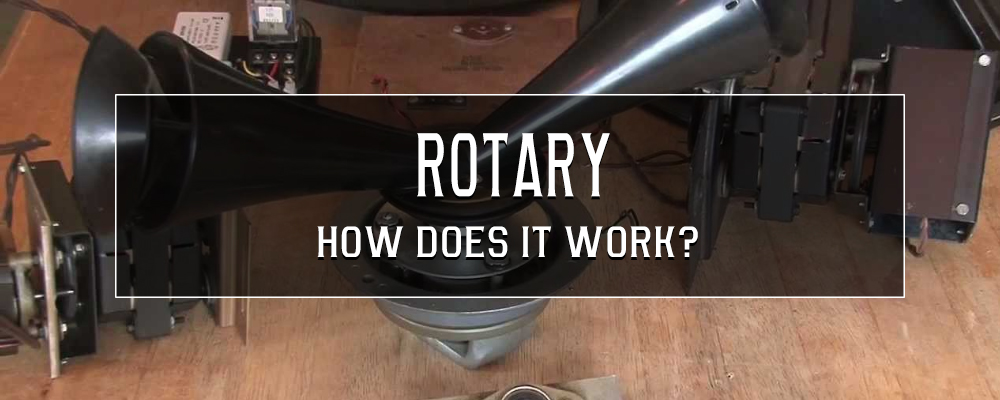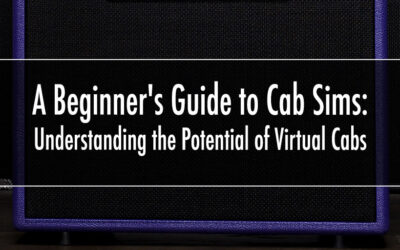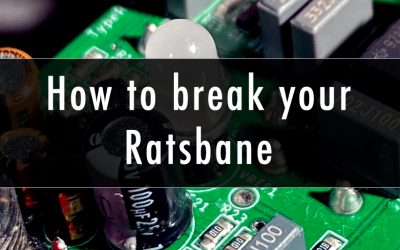
This week, it’s time to have a look at my favourite of ALL modulation sounds, the “Leslie” (as replicated by the Rotary Pedal). The reason, I think, I love a Rotary pedal so much is because it’s kinda out of place within the guitar chain; for the longest time it wasn’t fashionable to use and it’s only when you go back through the back catalogue of music do you hear it used often. In the 60’s through to the early 80s it was used a lot, and then once the chorus’ of the 80’s truly kicked in, Rotary disappeared into the midst’s of history. Fortunately, this has changed in recent years and the Rotary Pedal is now one of the most popular and sought after effects of today.
Rotary is basically an emulator of the Leslie speaker system (now, this might be the part where you skip through to the next paragraph as I expect many of you may already know this). The Leslie system dates back to the late 1930’s when Donald Leslie was looking for a way to replicate the huge church and theatre organ sounds of the time, and the first units were produced in 1941. He wasn’t really interested in marketing or mass producing them, so it was quite an exclusive business until he sold the business to CBS in 1965 (who then went on to sell to Hammond, who then sold to Suzuki Musical Instrument Corporation). The Leslie was basically a huge cabinet with a tube amp and speakers within. One speaker for the lower frequencies and usually a dual horn for the top. Leslie discovered that if you rotate a baffle in front of the lower speaker (the woofer) and rotated the horns (the horn) you could get a beautiful movement of sound that has been beloved by organ players ever since.
Where does this leave us as guitar players and the effect we all now love? The first thing we have to do is locate the crossover point within the cabinet. It’s well documented that the crossover point for the popular Leslie system is around 800hz. When I was building this I tried to hard shelf at 800 but I found it a little sterile, so I put in two large (kinda) shelf things in, but positions overlap somewhat and there is ‘bleed’ between the two. Here is how they are set in all of the examples that follow.

As you can see, there is an approximate ‘meeting of the points’ at around 800hz (give or take).
Having split the signal into 2, 1 for each EQ channel (as usual, I copied and pasted the guitar line over so there are no inconsistencies other than the player, me). The first part of the example removes each part in turn so you can hear what each speaker is throwing out. From there, I put the rotary effect on… I used a pretty standard yet beautiful sounding tremolo for this, to give the impression of the movement that comes from the speakers spinning. The woofer is pretty well just a rounded sine wave, but the wave on the horn is a little sharper, to make it a little more realistic. It’s only a fraction, but it makes the whole thing sound cooler.
The famous Leslie woofer rotated at between 50 and 60 revolutions per minute (RPM) and between 55 and 65 RPM for the horn (in the resting state). This is where I start to separate myself from the originals, as I find the timings to be better for guitar when they are a little slower for the horn.
You will see that the woofer moves from 50 at slow (known as choral) to about 560 for fast (known as tremolo), and the horn goes from 60, to 120, and then on to 660 and 800 for fast. As the horn in a Leslie generally has 2 speakers, each rotation of the horn means 2 throbs. I personally find 120 too fast for the choral and 800 too fast for the tremolo, so I keep them at 60 and 660 in my final demonstration. The only reason for this is because I like it and it affords a little more clarity in the mix!!
When we move on to the defining feature of the Rotary pedal system, the ramp, I have tried to lay it out for you as clear as I can. In the following demonstration you will see that the ‘footswitch to change speeds is pressed’, and the speakers speed up and then slow down at the same point.
In example 1, they speed up and slow down at the same rate. In example two, you get a more realistic speed up and slow down pattern, as the woofer is much heavier than the horn, it takes longer to speed up and subsequently return back to its original speed. In example 3, you will see that the ramps are now on a curve, as the laws of physics etc. etc.
So, we’ve now built a fairly good Rotary pedal emulator in logic. However, I have intentionally left out certain parts that make this sound totally realistic, but in the follow example I have added them… what they actually are, you can try to guess, I’m not going to list them here, but they are the icing on the cake bits that give it a little more realism.
I have recreated my favourite song that features a Rotary pedal effect, the sublime “Something” written by George Harrison (that appears on the album “Abbey Road” by The Beatles – I located the stems for this online so I am actually playing with The Beatles! Well, probably not, as they are more than likely the Guitar Hero stems, but a boy can dream!!). I’ve not tried to emulate his sound at all – I’ve made it a little cleaner and bought it up in the mix a little (because at times It’s quite hard to hear). For the nerds, you will notice 3 guitar lines on the screen (each recorded direct to the soundcard with the gorgeous Seth Baccus ShoreLine T and you can see me playing them in the bottom corner), horn and woofer channel receive the Rotary treatment (you can follow the speed/ramp on the screen) and then are fed into Aux 1. The lead line has quite a tasty EQ hump, with a wide Q, pushed in over 800hz, to give it that more ‘in front’ place of the mix, then also fed into Aux1. Aux1 is a patch in Helix Native, the woofer is running through a 4×10” Tweed, and the horn AC30 with a 2×12” – there is a 40ms (100% wet) delay line taking the Vox model back a fraction, this assists with the concept of the stereo spread. You’ll also see that the lead channel has the volume riding on it all the time, because I didn’t play some parts loud enough! Please listen through headphones if you can…
When I uploaded this track, the owners of the music instantly blocked it due to copyright infringement, but I successfully appealed stating what this was for (an educational example of how a Rotary effect works) and they have reopened it. There is a back-up here, hosted on Vimeo, should you not be able to see this should they rescind the appeal at any point, I hope they don’t though!



I was of the impression that a Leslie horn is only one-sided, the second cone is non-functional and is only a counter balance to equalize weight around the center of rotation. Am I wrong? Also, the rotation alters volume and produces a doppler effect. Do rotary pedals do both effectively?
We can’t divulge how we did it, trade secrets etc, but we analysed them very deeply….
Trade secrets… Well if you “analysed them (?) deeply” as you stated you’d know full well that the Leslie horn is configured exactly as described by John.
You’re right on both counts. One horn is only there to balance out the other.
The Leslie effect is largely based on the Doppler effect.